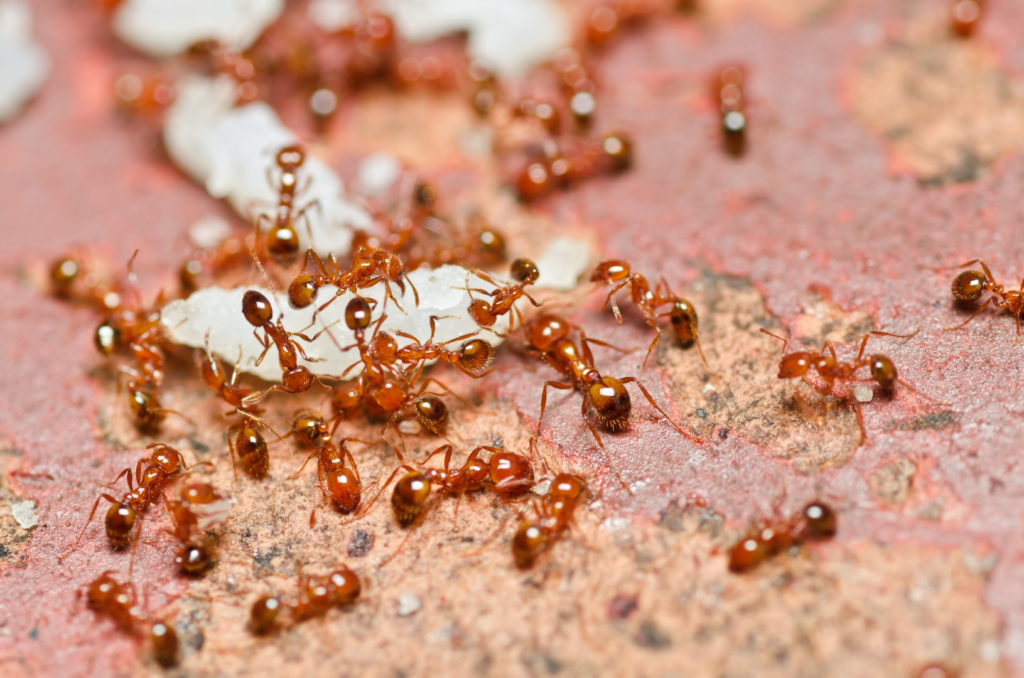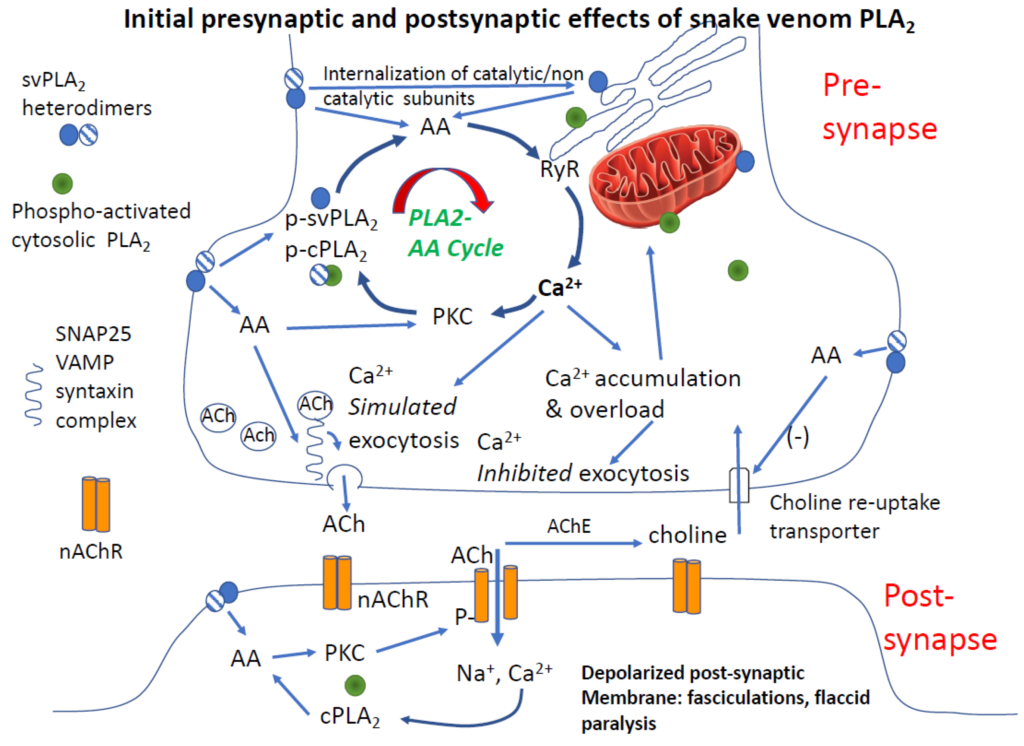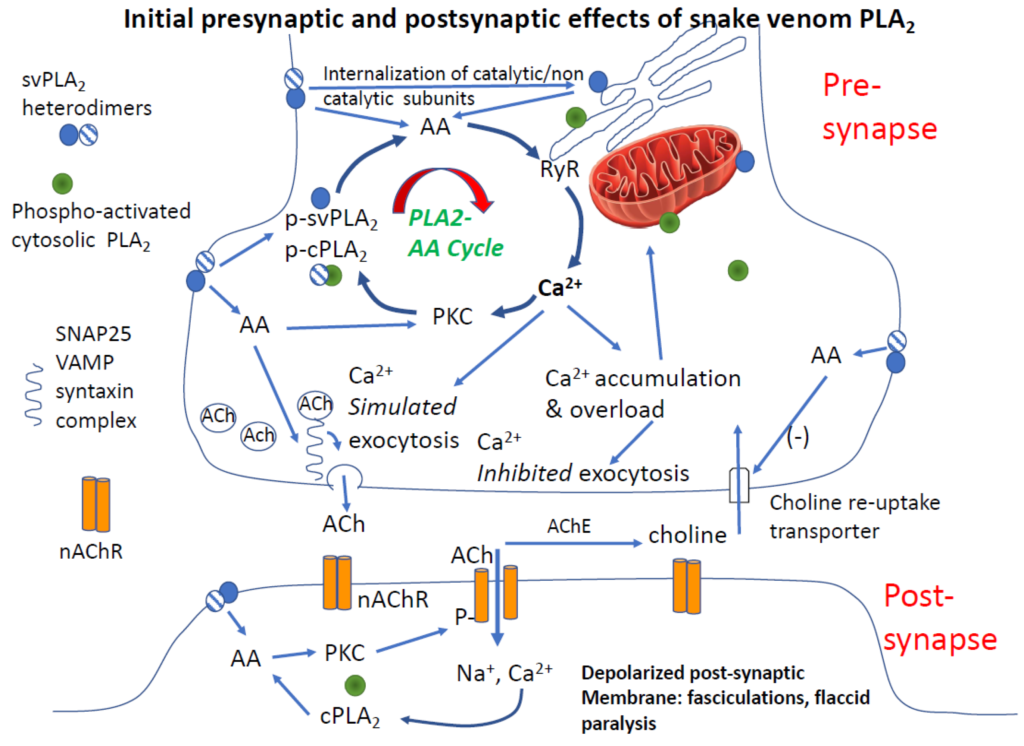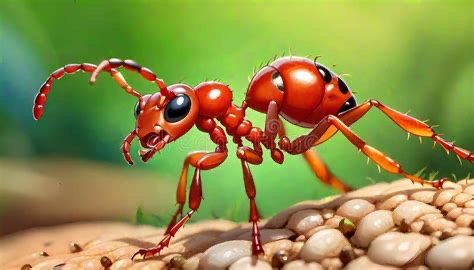
The Day a Tiny Beast Defied My Strength**
By Mian Ishaq. > Tue, Dec, 31, 2024
It is my true story, me, my elder brother and two of my nephews were on long vacation in Florida, charging our batteries and enjoying the magical sceneries and warm and clear water of Clear water Beaches, one day when just driving around and visiting new place’s, that incident happened.

It was a balmy afternoon in Florida, where the air hummed with a sense of serenity. I had just emerged from a profoundly peaceful meditation session, my mind and body resonating with calm. I slipped into my sandals and stepped out onto the warm ground, relishing the light breeze against my face. As I was preparing to leave, someone struck up a conversation. Lost in their words, I barely noticed the small, determined intruder making its way toward my exposed foot.
Out of nowhere, a sharp, searing pain erupted on my left toe. Instinctively, I lifted my other foot and crushed the culprit—a small, reddish-brown ant. Its body crumpled easily under the pressure, but its vengeance had already begun coursing through my veins.
My toe throbbed, the pain amplifying by the second. “Ah, the pain!” I exclaimed, drawing the attention of my elder brother and two nephews. My brother, ever the sarcastic figure, dismissed my complaints with a smirk. “It’s just a tiny ant, not a snake. Stop whining,” he said, shaking his head. My nephews, amused by my predicament, exchanged knowing glances and snickered. Their laughter, however, faded quickly as the situation escalated.
I climbed into the car, my toe still pulsing with pain. Moments later, an itch crept across my face and scalp, turning into a burning sensation. My brother, noticing my increasingly swollen face, stiffened with concern. “Drive faster,” he barked at my nephew, who floored the gas pedal. The tension in the car was palpable as my swelling grew worse.
When we finally arrived at the hospital, I staggered through the main entrance, barely able to keep my balance. At the reception desk, I tried to explain what had happened. “A stupid ant…bit me…on the toe,” I slurred. “I killed that beast!” The words barely left my mouth before dizziness overwhelmed me. The world blurred, and I felt myself collapsing.
The Science of the Beast’s Venom

When I regained consciousness, I was lying on a stretcher in a sterile hospital room. The fluorescent lights above flickered faintly. A doctor stood by my side, his face a mix of relief and sternness.
“You’re lucky to be alive,” he said. “That wasn’t an ordinary ant—it was a fire ant. Their venom is potent, and without immediate treatment, many people don’t survive.”
I was stunned. How could something so small wield such power? The doctor explained that fire ant venom contains an alkaloid called solenopsin, a potent neurotoxin. It’s not the size of the ant but the nature of its venom that makes it dangerous. Here’s what happens when it enters the body:
- Injection of Venom: When the ant bites, it anchors itself with its mandibles, stinging repeatedly and injecting venom into the skin. Each sting releases tiny amounts of solenopsin.
- Immune System Reaction: The venom triggers the body’s immune system, leading to the release of histamines. This causes localized swelling, redness, and a burning sensation.
- Toxin Pathway: Solenopsin disrupts the sodium and potassium channels in nerve cells, impairing their function. This results in sharp pain and, in severe cases, systemic symptoms.
- Anaphylaxis Risk: In sensitive individuals, the venom can cause an allergic reaction called anaphylaxis. This includes symptoms such as facial swelling, difficulty breathing, rapid heart rate, and low blood pressure.
- Shock and Collapse: Without intervention, the immune response spirals out of control. The swelling can obstruct airways, and systemic inflammation can lead to dizziness, fainting, or even death.
Reflections on Power and Fragility
As I listened to the doctor, I couldn’t help but marvel at the paradox. A creature so minuscule that it can be crushed underfoot wielded enough power to incapacitate me completely. The venom it carried—a minuscule drop—was enough to disrupt the intricate systems that sustain life.
This encounter became a humbling reminder of the delicate balance between life and death. In my arrogance, I had dismissed the ant as insignificant, yet its bite brought me face-to-face with my own fragility.
The doctor concluded his explanation by emphasizing the importance of vigilance. “Fire ants are common in Florida,” he said. “Always seek medical help immediately if you’re bitten.”
As I left the hospital, the world seemed different. I had come close to losing everything because of a creature so small it would be invisible in the grand scheme of things. Yet, perhaps that was the lesson: in the grand tapestry of life, even the tiniest threads can hold immense power.
A Lingering Shadow
The days that followed my hospitalization were a whirlwind of emotions and realizations. The initial shock had faded, replaced by a deep-seated anxiety that lingered like a persistent shadow. I found myself hyper-aware of every small movement, every potential threat, no matter how insignificant it seemed.
The Road to Recovery
My recovery was neither swift nor straightforward. The doctors had administered antivenom immediately after my arrival, which was crucial in neutralizing the venom’s effects. However, the road to full recovery required more than just medical intervention—it demanded time, patience, and a steadfast commitment to healing.
Physical symptoms gradually subsided, but the psychological impact was more profound. Nightmares often visited me, replaying the moment of the bite with an intensity that made me wake up drenched in sweat. I started experiencing heightened anxiety, especially when outdoors or in areas where fire ants were known to inhabit. Simple activities like walking barefoot in the backyard became sources of immense stress.
My elder brother, once dismissive, became my staunch supporter. He ensured that my living spaces were free from fire ant infestations, sealing cracks and eliminating potential nesting sites. My nephews, who had once found humor in my plight, now showed genuine concern. They accompanied me on walks, their presence a comforting reminder that I was not alone in this ordeal.
Confronting Vulnerability
This incident forced me to confront my own vulnerability. In meditation, I had sought to find inner peace and invulnerability, to transcend the physical pains and emotional turmoils of daily life. Yet, here I was, humbled by a tiny creature whose power I had underestimated.
I began to delve deeper into understanding the natural world, studying the behavior and ecology of fire ants. Learning about their social structures, their survival mechanisms, and their role in the ecosystem provided a sense of control over the fear that had taken root within me. Knowledge became my armor, shielding me from the paralyzing effects of ignorance.
A Community United
My experience also brought to light the importance of community and mutual support. Sharing my story with friends and neighbors sparked conversations about fire ant prevention and first aid measures. Together, we organized workshops and awareness campaigns, transforming my personal ordeal into a collective mission to safeguard our community.
Local schools incorporated lessons on recognizing and avoiding fire ants, while community centers distributed information pamphlets detailing the steps to take in case of a bite. This collective effort fostered a sense of unity, turning a frightening incident into an opportunity for communal growth and resilience.
Embracing Gratitude
As weeks turned into months, the physical scars began to fade, but the emotional journey continued to shape me. I developed a profound sense of gratitude for the second chance I had been given. Each morning, as I laced up my shoes and stepped outside without fear, I celebrated the small victories that marked my path to healing.
Meditation sessions resumed, but with a newfound depth. I no longer sought to escape the world but to engage with it more consciously and compassionately. The tranquility I once sought was now intertwined with a vigilant awareness, a balance between inner peace and external caution.
The Unexpected Lesson
The incident with the fire ant was more than a painful memory; it was a transformative lesson in humility, resilience, and the intricate balance of nature. It taught me that strength does not lie in physical might alone but in the ability to adapt, to seek understanding, and to find support in times of need.
As I reflected on this journey, I realized that life’s most profound lessons often come from the most unexpected sources. A tiny fire ant, whose existence I had previously overlooked, became the catalyst for a deeper understanding of myself and the world around me.
A New Beginning
With time, the fear that once gripped me loosened its hold. I returned to my daily routines with a renewed sense of purpose and an appreciation for the fragility and resilience inherent in all living things. The memory of that fateful day remained, not as a source of fear, but as a testament to the strength that emerges from vulnerability.
My brother, nephews, and I continued to foster a supportive environment, ensuring that our bond remained unshaken by the trials we faced. Together, we navigated the challenges of life, each of us carrying the lessons learned from that day in Florida.
Epilogue: The Ripple Effect
Years later, the incident with the fire ant became a pivotal chapter in my life story. It influenced my interactions, my career choices, and my perspective on nature and humanity. I pursued studies in environmental science, driven by a desire to understand and protect the delicate ecosystems that sustain us.
In sharing my story, I hoped to inspire others to recognize the power that lies in even the smallest of beings and to approach life with both humility and courage. The fire ant, once a symbol of pain and fear, had become a beacon of resilience and a reminder that true strength is often found in the most unexpected places.
The Action Pathway of Fire Ant Venom: A Deeper Dive

Understanding the physiological impact of fire ant venom involves delving into the intricate mechanisms by which solenopsin, the primary toxic component, interacts with the human body. Here’s a more detailed exploration:
- Venom Composition and Injection:
- Solenopsin: Fire ant venom primarily contains alkaloids known as solenopsins. These are potent compounds responsible for the venom’s toxicity.
- Delivery Mechanism: The fire ant uses its mandibles to secure a grip and its stinger to deliver the venom. Multiple stings can result in a cumulative dose of solenopsin, exacerbating the body’s reaction.
- Immediate Local Reaction:
- Pain and Inflammation: Upon injection, solenopsin causes immediate pain by activating pain receptors (nociceptors) in the skin. This is followed by inflammation as the body’s immune system responds to the foreign substance.
- Histamine Release: The venom prompts mast cells to release histamines, leading to vasodilation (widening of blood vessels) and increased vascular permeability. This results in redness, swelling, and the characteristic burning sensation.
- Systemic Absorption and Effects:
- Neurological Impact: Solenopsin disrupts ion channels in nerve cells, particularly sodium and potassium channels. This impairs the ability of neurons to transmit signals effectively, leading to symptoms such as dizziness, confusion, and in severe cases, seizures.
- Cardiovascular Strain: The systemic effects of the venom can place significant stress on the cardiovascular system. Histamine-induced vasodilation can lead to a drop in blood pressure (hypotension), while the body may attempt to compensate with an increased heart rate (tachycardia).
- Allergic Reactions and Anaphylaxis:
- Immune System Overreaction: In some individuals, the immune system may overreact to solenopsin, leading to anaphylaxis—a life-threatening allergic reaction.
- Symptoms of Anaphylaxis: These include severe swelling (angioedema), particularly around the face and airways; difficulty breathing due to bronchoconstriction; rapid or weak pulse; and a sense of impending doom.
- Emergency Response: Anaphylaxis requires immediate medical attention, typically involving the administration of epinephrine (adrenaline) to counteract the effects of the venom and stabilize the patient.
- Long-Term Effects:
- Chronic Inflammation: In some cases, persistent inflammation can lead to prolonged pain and swelling, necessitating ongoing medical treatment.
- Psychological Impact: The trauma of a severe sting can result in lasting psychological effects, including anxiety, phobias, and post-traumatic stress disorder (PTSD).
- Treatment and Management:
- Antivenom and Antihistamines: Prompt administration of antivenom can neutralize the venom, while antihistamines help mitigate allergic reactions.
- Supportive Care: In cases of anaphylaxis, additional treatments such as corticosteroids and bronchodilators may be necessary to manage symptoms and prevent complications.
- Preventive Measures: Avoiding areas infested with fire ants, wearing protective clothing, and being vigilant about removing nests can significantly reduce the risk of future stings.
Final Thoughts
The encounter with the fire ant was a stark reminder of the interconnectedness of all living beings. It underscored the importance of respecting nature’s intricacies and the profound impact that even the smallest creatures can have on our lives. As I moved forward, I carried with me the lessons learned from that day—a blend of scientific understanding, personal resilience, and an enduring appreciation for the delicate balance that sustains our world.
